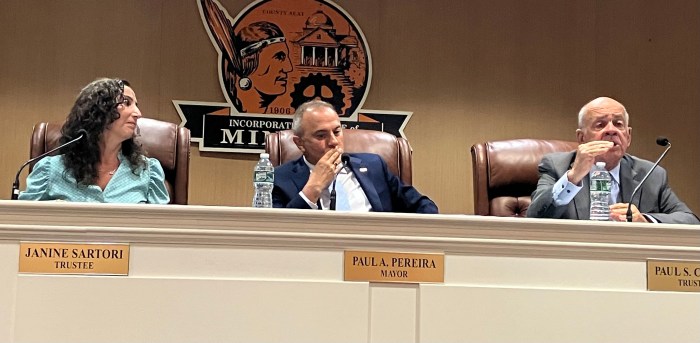
Nassau County Comptroller George Maragos recently released the 2015 mid-year financial projections, which indicate that the county will end with a $61.9 million budgetary deficit for the primary operating funds, assuming no further initiatives by the administration to raise revenues or cut expenses. The administration, however, is likely to find unbudgeted opportunities to end in balance.
The county fiscal condition will remain weak as more than $140 million in financing and fund balance is used to achieve the projected year-end results causing the structural gap to remain at historic highs while lowering the fund balance.
“The county administration continues to rely heavily on borrowing to compensate for slowing sales tax revenues and a lack of alternative new revenue sources to meet rising expenditures,” said Maragos. “These trends have weakened the county financials and need to be reversed through major structural changes. The oversight by NIFA needs strengthening as the County’s fiscal fundamentals have gotten worse under its control.”
Under the presentation basis prescribed by the Nassau County Interim Finance Authority (NIFA), which excludes certain borrowing and other financing used for operating expenditures, the county would be ending the year with a negative $219.7 million result, a worsening of approximately 14 percent over 2014. In the meantime, the county’s structural gap (the difference between recurring operating revenues and expenses) is projected to end at near historic high of $241.3 million, down slightly from $244.8 million in 2014.
NIFA took control of the county finances in early 2011 on the basis that the projected deficit would exceed 1 percent for the purpose of imposing fiscal discipline. It now appears that the NIFA presentation deficit will deteriorate to approximately 7.4 percent, significantly worse than prior to NIFA declaring its control period in 2011.
The currently projected $61.9 million budgetary deficit is primarily from a revenue shortfall of $211.4 million, offset by $149.5 million in lower expenditures. The revenue shortfall is from the estimated; $51.5 million decline in fines and forfeitures revenues with the elimination of the speed camera program and a decline in red light camera violation revenues, $37 million in projected lower sales tax revenues, $33 million in borrowing for termination pay and a $9 million loss from the unlikely start of a Video Lottery gaming facility in 2015.
Offsetting the revenue shortfall is the $149.5 million in projected lower expenditures due to; $99 million property tax refunds shifted from operating to borrowing, $9.6 million in net payroll savings ($38.2 million in less spending from unfilled positions, attrition and lower projected health insurance rates, but $28.6 million in higher anticipated police termination pay), $13 million savings from the elimination of the mission payment to the Nassau Health Care Corporation (NHCC), lower spending in Social Services and debt service and a decrease in spending for contractual services from the elimination of the speed camera program. The above is reduced by $13.4 million in overspending for police overtime.
Additionally, the fund balance for the county’s general fund and countywide special revenue funds (which excludes the Police District Fund) is likely to decrease, if there are no additional corrective actions, from $100.2 million at year-end 2014, to $57.4 million at year-end 2015 and stand at 2.44 percent of the prior year budgetary expenditures, below the county’s policy of at least 4 percent. The total long-term debt for the County is projected to decrease by $26.3 million to approximately $3.66 billion after the expected maturing of $320.5 million in debt.
“The administration, the legislature and NIFA must address the mounting fiscal issues to avoid further weakening of the county financials and unpleasant consequences,” said Maragos. “At this stage, major structural changes to county operations and revenue sources will be required. NIFA must participate in this process. It cannot remain relatively passive while watching its own county financial metrics deteriorate precipitously for the second consecutive year.”



























